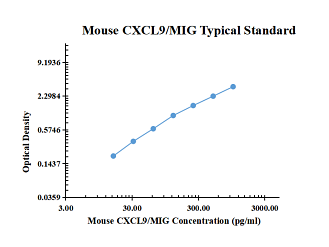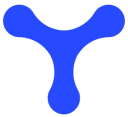Mouse CXCL9/MIG DTSet enzyme-linked immunoassay kit
| Specification | 96*5 Test;96T*15 Test |
|---|---|
| Standard Curve Range | 15.63 pg/ml-1000 pg/ml |
| Standard Curve Gradient | 7 Points/3 Folds |
| Number of Incubations | 2 |
| Detectable sample | Liquid phase sample of soluble substances. For example: serum, plasma, cell culture supernatant, tissue grinding liquid, etc. |
| Sample Volume | 10 μl |
| Type | Not Ready-to-Use |
| Test Duration | 120min |

| pg/ml | O.D. | Average | Corrected | |
|---|---|---|---|---|
| 0.00 | 0.0276 | 0.0288 | 0.0282 | |
| 15.63 | 0.1891 | 0.1990 | 0.1941 | 0.1659 |
| 31.25 | 0.3902 | 0.4016 | 0.3959 | 0.3677 |
| 62.50 | 0.6380 | 0.6202 | 0.6291 | 0.6009 |
| 125.00 | 1.0080 | 1.1180 | 1.0630 | 1.0348 |
| 250.00 | 1.4850 | 1.4880 | 1.4865 | 1.4583 |
| 500.00 | 2.3870 | 2.2530 | 2.3200 | 2.2918 |
| 1000.00 | 3.5570 | 3.2720 | 3.4145 | 3.3863 |
Product Features
- Optimized capture and detection antibody pairings with recommended concentrations save lengthy development time
- Development protocols are provided to guide further assay optimization
- Assay can be customized to your specific needs
- Economical alternative to complete kits
Kit Content
- Capture Antibody
- Detection Antibody
- Recombinant Standard
- Streptavidin conjugated to horseradish-peroxidase (Streptavidin-HRP)
Other Reagents Required
DTSet Ancillary Reagent Kit (5 plates): containing 96 well microplates, plate sealers, substrate solution, stop solution, plate coating buffer (PBS), wash buffer, and assay buffer.
- 96 well microplates: YOUKE Life, Catalog # DSEP01. Plate Sealers: YOUKE Life, Catalog # DSSF01.
- Coating Buffer: 137 mM NaCl, 2.7 mM KCl, 8.1 mM Na2HPO4, 1.5 mM KH2PO4, pH 7.2-7.4, 0.2μm filtered . YOUKE Life, Catalog # DSCB01.
- Blocking Buffer: YOUKE Life, Catalog # DSBB01.
- Wash Buffer: 0.05% Tween® 20 in PBS, pH 7.2-7.4. YOUKE Life, Catalog # DSWB01.
- Assay Buffer: 0.5% BSA,0.05% Tween® 20,PBS Solution.YOUKE Life, Catalog # DSAB01
- Substrate Solution: Tetramethylbenzidine. YOUKE Life, Catalog # DSTS01.
- Stop Solution: 0.5mol/ml H2SO4. YOUKE Life, Catalog # DSSS01.
Product Data Sheet
Background: CXCL9/MIG
CXCL9, also known as MIG, is a chemokine that is induced in macrophages and in CNS glial cells in response to IFN-gamma. CXCL9 signals through CXCR3 to induce the chemoattraction of activated T cells and tumor-infiltrating lymphocytes.

